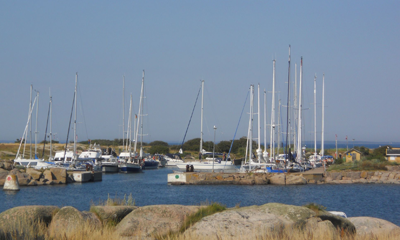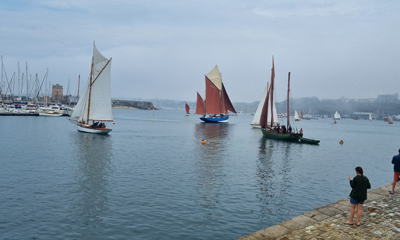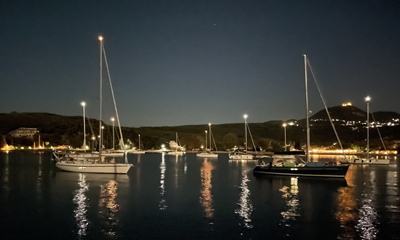Cruising the European Inland Waterways
By CA EIW Section
Introduction
The inland waterways of Europe offer 30,000 kms of sheltered cruising in some of the most beautiful and historic regions of the European continent, from the sailing yacht-friendly Standing Mast Routes of the Netherlands to the scenic canals of the Champagne and Burgundy regions of France, the Belgian Ardennes or the German Mecklenburg Lakes.
Jump to content
Cruising the european inland waterways
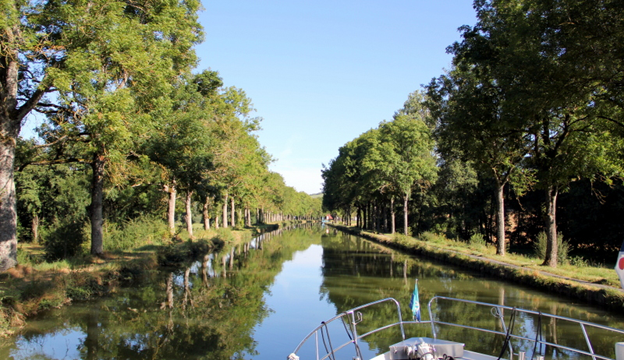
Canal near Rolamport
The inland waterways of Europe are a wonderful cruising experience, both for newcomers to boating and for seasoned sailors seeking more tranquil waters - and of course for those taking a short cut to or from the Med or the Baltic. The waterways pass through some of the most picturesque regions in Europe, such as the Ardennes in Belgium; the Champagne, Burgundy and Loire regions of France; the idyllic Friesian lakes in The Netherlands or the half-timbered towns and steeply sloping vineyards of the River Mosel in Germany.
Many of Europe's greatest cities grew up along important watercourses, some of which are still active trading routes, and it is very common to be able to moor right in the beating heart of great historic cities like Gent, Leiden, Paris or Cologne for little more than the cost of daily car parking.
The attractions of cruising the EIW
The inland waterways are a unique way to explore a country. Regional differences seem more apparent when criss-crossing a country via its waterways – in local culture, architecture, foods, customs and even language. Interaction with local communities is usually more satisfying than land tourists enjoy, since you need to engage regularly with lock keepers, bridge operators, local harbourmasters and others in ways that don't happen to land tourists - whose engagement is so often limited to hotel reception staff and tourist restaurant owners.
The waterways will also often take you into areas remote from large-scale human habitation, where memorable encounters with (sometimes rare) wildlife are likely to live in the memory for years. In some areas, kingfishers are as common as blackbirds and will follow your boat to pounce on the small fish you disturb. In others, deer may come to graze at the water's edge or – if you are suitably still – water voles and muskrats may emerge and patrol the banks. And in woodland areas, you may be serenaded to sleep as night falls by the plaintive hooting of owls and wake to the sounds of birdsong.
Getting on the waterways
People of all ages take to the EIW in a wide variety of vessels, from luxury cruisers to small sailing yachts. Many sailing yachts explore the 'mast up' waterways of the Netherlands or join motor boats on the 'mast down' picturesque canals and rivers of France, Germany or Belgium.
There's no reason why any boat that is not too deep in its draft or too high in so-called 'air draft' cannot travel virtually anywhere on the waterways. Some EIW Section members cross the Channel every year to cruise the EIW; others base their boats in Europe, while a few even take up permanent residency on the waterways.
Rules and regulations
Cruising on the EIW involves much less bureaucracy than sea sailing, not least since once in the Schengen Zone boaters are crossing internal borders free of restrictions rather than arriving at seaports of entry.
Qualifications required are minimal: boaters who already hold an ICC (International Certificate of Competence) only need to pass a simple online test to show their understanding of the CEVNI rules (CEVNI being the European body that lays down navigation rules for the EIW). In the Netherlands, even this is not required if one’s boat is under 15m.
Costs
Cruising the EIW can be accomplished on a considerably smaller budget than in most coastal areas. Where coastal marinas may charge around €50-€70 per night for an average 12m cruiser, a similar berth on the inland waterways can cost as little as €10-€15 – or even be provided free of charge by a municipality keen to encourage water-borne tourism.
Layup or winter storage costs are also generally cheaper, ranging from as little as €600 for in-water storage to around €2,000 for covered storage on land. Many owners find they can keep their boats on the EIW for less than a quarter of the cost in their home country.
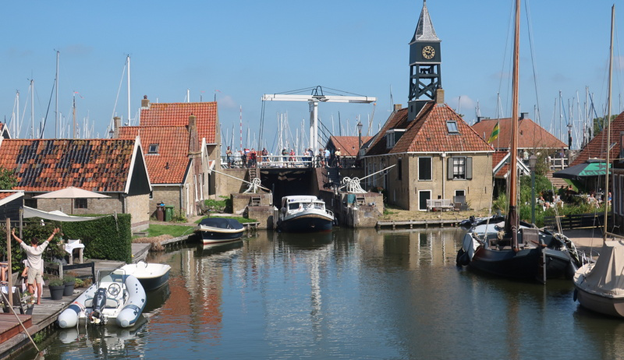
17th century lock at Hindeloopen
How the EIWS helps
EIWS members benefit from a wide range of support, including help with choosing or preparing a boat; understanding local regulations; navigating the inland waterways; planning itineraries; obtaining services and supplies and even coping with foreign language terminology.
Samples of our helpful advice in the form of 12 free Guidance Notes can be downloaded below. The Section publishes a total of 25 guides to the EIW - more than any other publisher – which are updated annually and available in downloadable PDF format or printed on demand.
In addition to the invaluable information these publications provide, purchasers of any of the guides who subsequently decide to join the CA online can benefit from a 15% discount offer on their first year's membership subscription!
Members also benefit from a sociable internet forum for exchanging tips and advice, through which answers to even the most esoteric questions can usually be obtained within a few hours. The Section also publishes an informative quarterly newsletter and runs an Annual Seminar (open to non-members) which is a great opportunity to exchange information and further friendships with other inland waterways cruisers.
Free guides
To take advantage of this offer, just click/tap the relevant subject and you can download the Guidance Note on the subject of your choice.
- Trip planning on the European Inland Waterways
- Sources of information on the European inland waterways
- Planning for long-term cruising
- Wintering in the European Inland Waterways
- VHF and ATIS (Automatic Transmitter Identification System)
- CEVNI rules
- Sources of Information for the Netherlands
- Sources of Information on the Netherlands Standing Mast Routes (SMR)
- Amsterdam vignette for pleasure craft
- Using the Waterkaarten Nederlands app
- Tips for cruising the French inland waterways
- Transiting the Kiel Canal
Further information:
